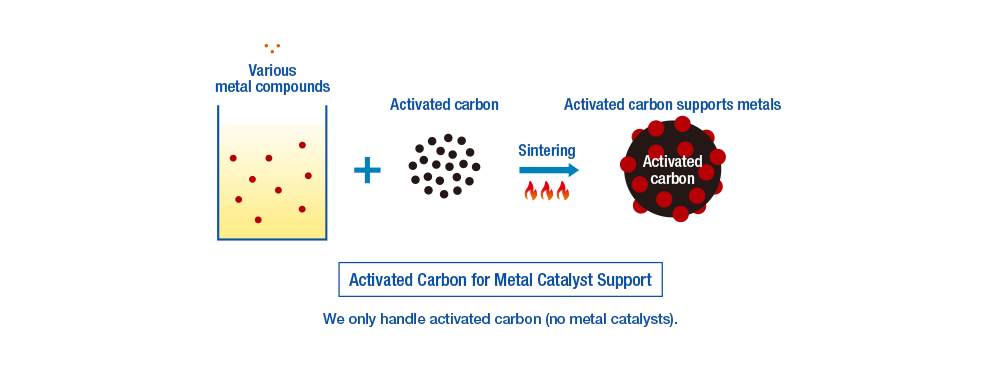Catalyst Support
Catalyst Support
![]()
Precious metal catalysts are used to improve reactivity in organic chemical reactions, and consist of metals such as palladium or rhodium dispersed on supports with high porosity. Amongst the different supports commonly used, activated carbons are ideally suited due to their large surface area, heat resistance and chemical resistance.
Osaka Gas Chemicals' activated carbon for catalyst support is made from wood-based has high purity and high filtration rate, and made from coconut shells has high purity and low attrition loss.
In addition, we have a wide range of types, including powder, pellets, and granular, so it can be used for a variety of chemical reactions, hydrogenation, oxidation, and amination.
| Support | Features |
|---|---|
| Activated carbon |
|
| Alumina |
|
| Silica |
|
| Zeolites |
|
| Titania |
|
| Magnesia |
|
Specific requirements for using activated carbon as catalyst Support
- Control of surface area and porosity
→Can be adjusted by changing activation conditions - Reduction of impurities such as sulphur or metallic content
→Can be adjusted by selection of especially high-purity coconut shell or wood-based raw material and optimization of washing - Granularity adapted to the type of reaction
→Can be adjusted to select molding particle size, grinding particle size control, and particle size distribution adjustment conditions to tailor the material for specific applications, including various chemical reactions like hydrogenation, oxidation, and amination.
Activated Carbon for Metal Catalyst Support


Contact
- For more info & lab samples, contact us.
- E-Mail us
Related Grade
Main grades
- FAC-10
- Highly purified powder type. High filtration rate and low attition loss as a result of narrow particle size distribution. Used as catalyst support.
- C2c
- Highly purified granular type. Used as catalyst support.
- C2x
- Highly purified pellet type. Used as catalyst support.



